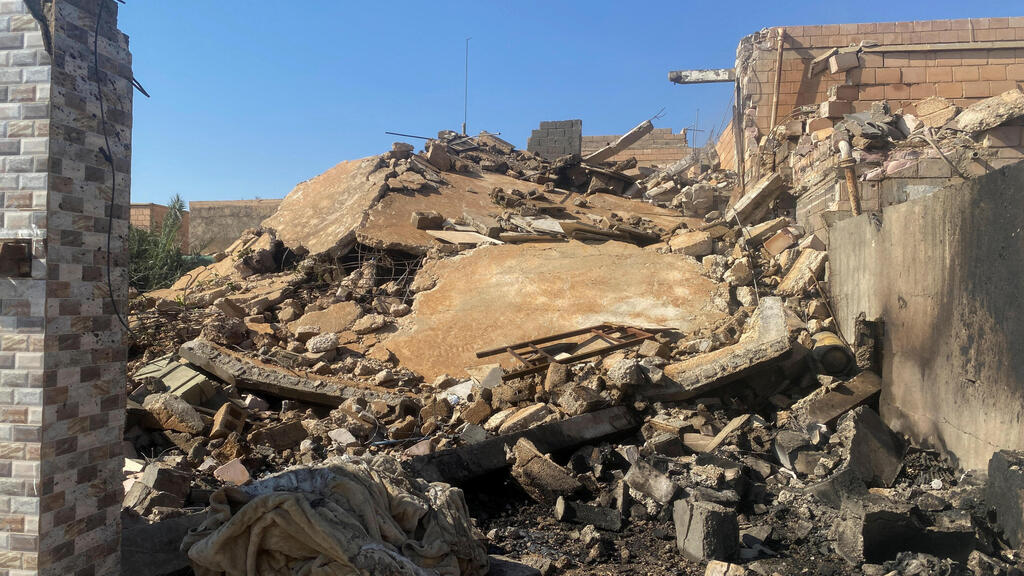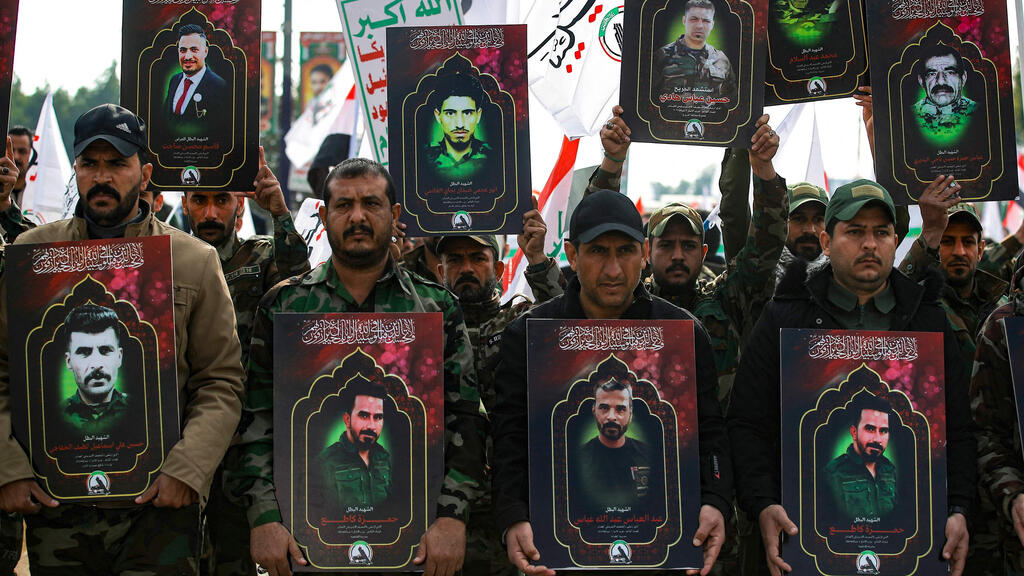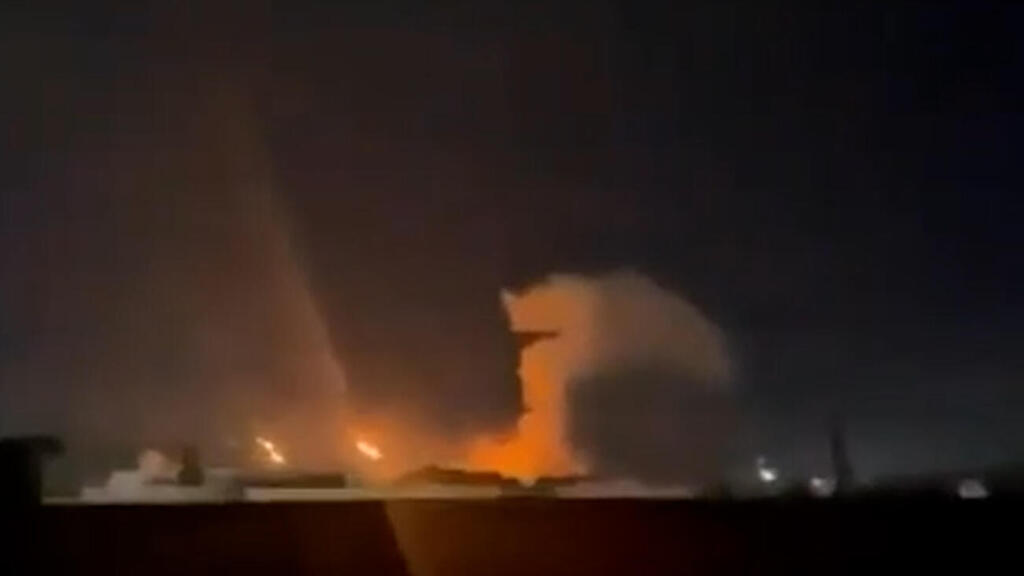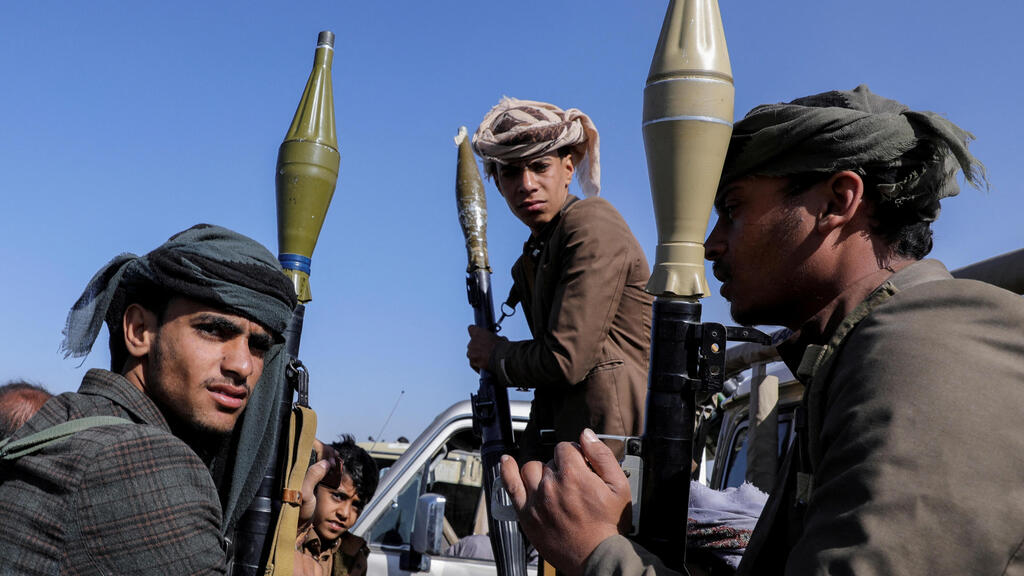Initially perceived as a U.S. retaliation for the missile strike in Jordan that killed three American servicemen last week, the operation now appears strategic, targeting Iran, especially after the UK joined in attacking Iran-backed militias in Iraq and Syria.
More stories:
Some 85 targets were struck by fighter jets and cruise missiles, far more than the 10 or so attacks after previous and even more deadly attacks on U.S. forces.
4 View gallery


Aftermath of an American strike on Al-Qa'im near Iraq's border with Syria on Friday
(Photo: Reuters)
The targets chosen were strategic. This was not a response to the source of fire or direct retaliation against the militias who launched the killer UAVs at the American base. These were strikes targeting the logistical and operational center of the Shi'ite militias which Iran's Revolutionary Guard Corps had established for them on the border between Syria and Iraq.
There, near the towns of Al-Bukamal on the Syrian side of the border and Al-Qa'im on the Iraqi side, the IRGC built a complex of camps, the largest of which is the Imam Ali Camp. The border crossing is on the main road leading from Iran, through western Iraq to Homs, and on to Damascus and the Lebanese Beqaa Valley. It is one of four land corridors used by Iran to transport weapons to their proxies in Iraq, Syria and Lebanon.
The Imam Ali Camp on the Syrian side of the border contains large warehouses where missiles, anti-aircraft batteries and UAVs are stored before being transferred to Lebanon, or before they are used by the Syrian, Iraqi or Afghan Shi'ite militias to target Israel or American troops, hundreds of kilometers away.
The Americans targeted the border crossing, known for harboring missile launchers, among other locations used by militia groups. One such base, used for launching UAVs against Israel and American forces, was constructed on the former T3 oil pipeline site, which once transported oil from Iraq to Syria and the refineries in Tripoli, Lebanon.
The Americans exercised caution in their strikes in Iraq, where 2,500 troops remain deployed. Officially labeled as advisors to the Iraqi military in its battle against Islamic State, these personnel actually include Air Force, commando and intelligence units. They maintain a strategic presence near the Iraq-Iran border, partly to safeguard the flow of Iraqi oil to the West.
Since the start of the Gaza war, U.S. troops in Iraq, Syria and Jordan have come under attack 160 times. In retaliation against pro-Iranian militias in Iraq, the Shi'ite-led government in Baghdad has demanded their withdrawal. Negotiations over this demand are ongoing, albeit slowly.
4 View gallery


Pro-Iran militias in Iraq carry pictures of the dead in an American strike on Friday
(Photo: Ahmad al-Rubaye / AFP)
The more limited strikes in Iraq are likely to expedite the process under Iran's pressure, which aims to remove the American military presence near its border.
The American attack on Friday indicates an expansive strategic operation that the Western coalition, under the leadership of the U.S., intends to continue in order to rebuild deterrence and rehabilitate the U.S. position in the region and in the face of the Iranian-Russian-Shi'ite axis supported by China.
U.S. President Joe Biden on Friday alluded to more attacks to come. Despite expectations to the contrary, the U.S. decided to operate across the entire region and on Saturday, its forces along with those of the UK and with support from Canada, Bahrain, Australia and New Zealand, attacked Houthi rebel infrastructure in Yemen.
The Houthis have jeopardized maritime routes and world trade where 30% of the world's oil and Gas from the Middle East, is transported and where much of the international trade makes its way from Asia to Europe.
Until now, the attacks against the Houthis were considered warnings but on Saturday, they were more extensive and lasted for a longer period of time, again as an indication and a message to Iran, that America means business.
At first, bombers and tomahawk missiles attacked Houthi ballistic missiles already on launchers ready to be fired at ships in the Bab el Mandeb straits. A few hours later, the American and British forces carried out what can be considered the "main course," hitting targets in central Yemen including around the capital Sanaa.
An air traffic control installation used by the Houthis to direct UAVs at cargo ships was hit as were rocket and missile storage facilities and production lines for UAVs, transported in parts from Iran. The attack was extensive and intended to cause destruction and not merely to send a warning. More attacks will likely follow.
What is becoming apparent is that the U.S. decided to systematically destroy the military network of Iran's proxies as well as that of the IRGC, used to attack Israel and the West.
Biden had been criticized at home for not launching strikes on Iranian territory, because of its complicity in the war against Israel, but Biden decided not to ignite a regional war and opted for attacks on IRGC bases and Iranian proxies, close enough to the Iranian border, hoping the message would be received in Tehran.
What the U.S. and the UK along with their allies are doing by attacking the IRGC and their proxies is akin to what Israel is doing to Hezbollah across its northern border. In addition to defensive action against the Iran-backed group's attacks, Israel is systematically destroying Hezbollah's operational and military infrastructure so as to impact their ability to carry out their attacks for a prolonged period, while sending Israel's own message to the regime in Iran.




